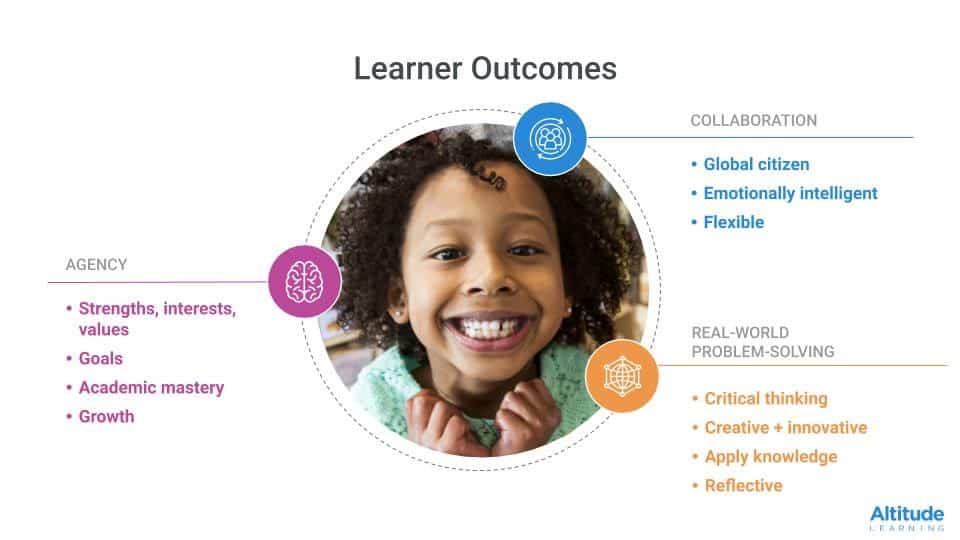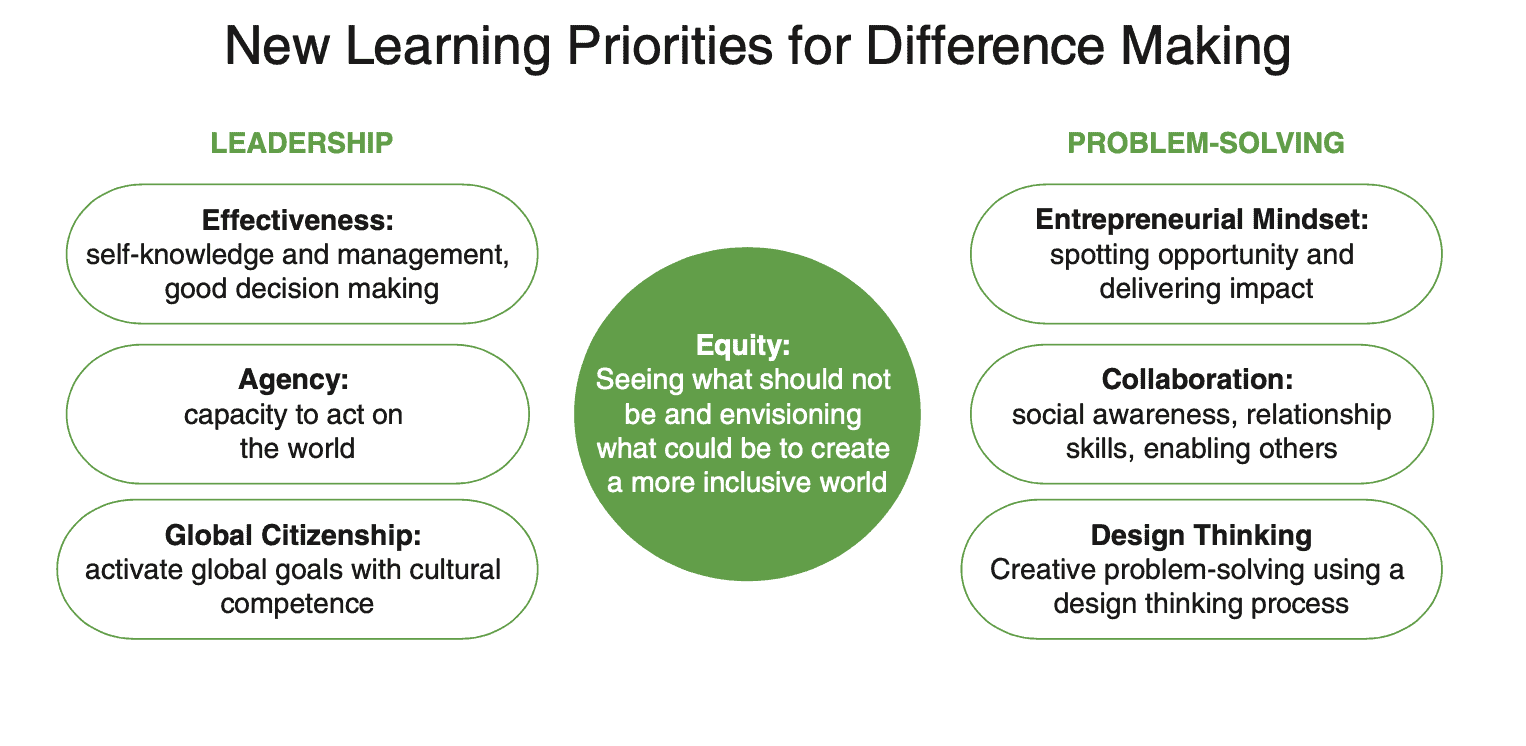Human Work: Learn Stuff Computers Can’t Do

Throughout the 40-year information age, we continued to educate youth as if computers did not exist. We teach courses that focus on memorizing content. We teach long division and factoring polynomials as if they are important skills. We give small problems with known answers when the real value add is attacking big problems we haven’t seen before (like climate change and pandemics).
We’re now four years into the innovation age with massive computational ability and code that learns–sometimes in helpful ways (like drug discovery) and sometimes in harmful ways (like social media info gullies). Novelty, complexity, and speed are watchwords in every sector. There has never been more opportunity –and inequality has never spread so quickly.
To add value, people should learn stuff computers can’t do. That’s the conclusion of Human Work in the Age of Smart Machines, a new book by Jamie Merisotis. As CEO of the Lumina Foundation, Merisotis has a good view of the work of the future. He sees computers getting smarter and more capable and, over the next decade, displacing repetitive tasks in many jobs and wiping out some jobs altogether.
The value add is in “human traits such as compassion, empathy, and ethics,” combined with “people skills, problem-solving skills, and integrative skills,” said Merisotis.
Merisotis makes the cases that “The worlds of work and learning are merging into a single system based on credentials whose meanings are clear and transparent.” As a result, schools should focus on skills that matter most–skills that are uniquely human, skills that leverage smart machines.
The old boundaries of learning about the 3Rs for 12 (or 16) years and then working for 40 years no longer exist. “Human work,” said Merisotis, “by its nature of earning, learning, and serving, engages our full range of abilities and capabilities.”
He argues for breaking down traditional walls between work and learning with earlier access to work-based learning and a lifetime of access to learning opportunities. Like the real-world learning initiative in Kansas City that will result in high school graduates with valuable experiences and credentials, Merisotis urges learning goals that reflect the skills and dispositions most important to citizenship and contribution.
Like Merisotis, our colleagues at Altitude Learning urge new learner outcomes: agency, collaboration, and real-world problem solving (featured image). The framework incorporates a student-centered approach, social and emotional learning, and global citizenship all in a very succinct easy to use and remember framework.
Schools Adopting New Learning Goals
The problem to be solved is that school success is currently defined by a test score and a list of classes taken — both are weak signals of interest and ability.
The invention opportunity (with a little unexpected pandemic flexibility) is articulating a new relevant shared mission and learner goals that prioritized success skills, wellbeing, and contribution.
Thousands of schools have adopted new learning goals expressed as a Portrait of a Graduate including fostering critical thinking, communication, collaboration, creativity, and other 21st century skills young people need to thrive in this complex, rapidly changing world.
Schools in the EL Education network share a character framework grounded in purpose, agency, and belonging. At the heart of developing effective learners and ethical people is learning to contribute to a better world.
XQ Learner Goals encourage young people to become “original thinkers for an uncertain world” (sense makers and generative, creative problem solvers), “generous collaborators for tough problems” (inquisitive world citizens and self-aware team members), and “learners for life.”
Summit Public Schools has a broader definition of success and a comprehensive outcome framework based on Turnaround’s Building Blocks for Learning (discussed in this post on curiosity).
CZI, which shares the Summit platform through a network of 400 schools has a framework for whole child development based on six domains: academic development, cognitive development, identity development, social-emotional development, mental health, and physical health. (You’ll see a great new outcome framework based on these six dimensions soon.)
The crisis could be an opportune time for your school to make contributions to the community a priority. Our new book suggests that difference making can be a great way to build agency, exert leadership, and practice problem-solving.

These outcome frameworks may be adopted as student learning goals or a graduate profile but bringing them to life requires translating them into grade span expectations and embedding them culture, curriculum, and communication.
North Kansas City School District administrators gathered yesterday in order to enrich plans to bring their learning goals–adaptability, empathy, learner’s mindset, communication, problem-solving, and collaboration–to life. The district is committed to making their portrait of a graduate a reality by embedding the competencies across their system.
Reconsidering learning goals in the middle of a crisis may seem ambitious, but it is a great time to clarify what is most important.
How Kids Grow Not Just What They Should Know
As communities consider new learning goals, it is important to consider the protective factors around students — like family support, connection to culture, routines, and consistency in school.
The Building Blocks progression from Turnaround illustrates that you can’t get to higher-order outcomes without a strong foundation of belonging, habits of self-regulation, the resilience to manage stress, and a growth mindset.
As a developmental progression, the Building Blocks help teacher teams “reimagine goals for youth learning, beyond academic standards, and then realize that these skills and mindsets need the same design, attention, and support, just like academic skills,” said Dr. Christina Theokas, Vice President of Applied Science at Turnaround for Children.
These Building Blocks “need to be integrated into authentic learning experiences, modeled, scaffolded with opportunities to transfer their learning to new settings,” added Theokas who helps schools integrate developmental supports into systems and practices.
During this pandemic, turning all the D’s and F’s out there into C’s (for curiosity) and A’s (for agency) requires teachers to focus on both individual factors and context around individual learners.
To provide this kind of whole child support to students, schools and communities need to provide whole teacher support (remember, there are a lot of teachers trying to teach their own kids while they are teaching your kids).
I know it’s crazy out there but it might be the right time to consider a simpler set of student-centered learning goals like agency, collaboration, and real-world problem-solving. They could provide a much-needed sense of priority and freedom to support learners where they are.
For more, see:
- Invention Opportunity: Measuring What Matters
- Invention Opportunity: Creating a Shared Reality
- 15 Invention Opportunities in Learning
Stay in-the-know with innovations in learning by signing up for the weekly Smart Update. This post includes mentions of a Getting Smart partner. For a full list of partners, affiliate organizations and all other disclosures, please see our Partner page.




0 Comments
Leave a Comment
Your email address will not be published. All fields are required.